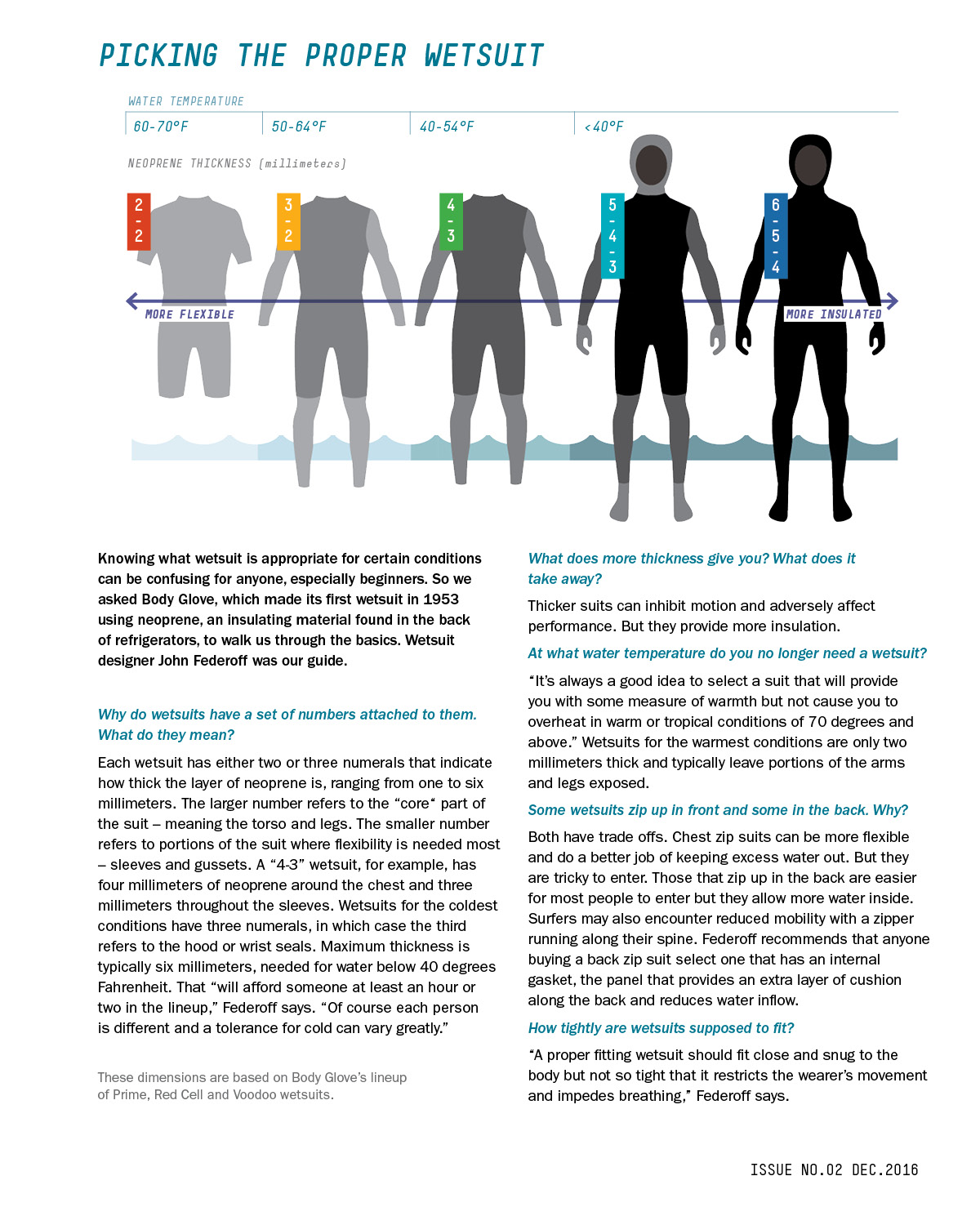How To: Picking The Proper Wetsuit

Knowing what wetsuit is appropriate for certain conditions can be confusing for anyone, especially beginners. So we asked Body Glove, which made its first wetsuit in 1953 using neoprene, an insulating material found in the back of refrigerators, to walk us through the basics. Wetsuit designer John Federoff was our guide.
*Why do wetsuits have a set of numbers attached to them. What do they mean?
Each wetsuit has either two or three numerals that indicate how thick the layer of neoprene is, ranging from one to six millimeters. The higher number refers to the “core“ part of the suit – meaning the torso and legs. The smaller number refers to portions of the suit where flexibility is needed most – sleeves and gussets. A “4-3” wetsuit, for example, has 4 millimeters of neoprene around the chest and 3 millimeters throughout the sleeves. Wetsuits for the coldest conditions have three numerals, in which case the third refers to the hood or wrist seals. Maximum thickness is typically 6 millimeters, needed for water below 40 degrees Fahrenheit. That “will afford someone at least an hour or two in the lineup,” Federoff says. “Of course each person is different and a tolerance for cold can vary greatly.”
*What does more thickness give you? What does it take away?
Thicker suits can inhibit motion and adversely affect performance. But they provide more insulation.
*At what water temperature do you no longer need a wetsuit?
“It’s always a good idea to select a suit that will provide you with some measure of warmth but not cause you to overheat in warm or tropical conditions of 70 degrees and above,” Federoff says. Wetsuits for the warmest conditions are only 2 millimeters thick and typically leave portions of the arms and legs exposed.
*Some wetsuits zip up in front and some in the back. Why?
Both have trade offs. Chest zip suits can be more flexible and do a better job of keeping excess water out. But they are tricky to enter. Those that zip up in the back are easier for most people to enter but they allow more water inside. Surfers may also encounter reduced mobility with a zipper running along their spine. Federoff recommends that anyone buying a back zip suit select one that has an internal gasket, the panel that provides an extra layer of cushion along the back and reduces water inflow.
*How tightly are wet suits supposed to fit?
“A proper fitting wetsuit should fit close and snug to the body but not so tight that it restricts the wearer’s movement and impedes breathing,” Federoff says.
What to wear based on water temperature (specific Body Glove models are noted in parenthesis).
Below 40 degrees (Fahrenheit)
6/5/4 – hood attached (Voodoo)
5/4/3 – hood attached (Red Cell)
40-54 degrees (Fahrenheit)
4/3 – with or without a hood attached (Red Cell, Prime, Voodoo)
50-64 degrees (Fahrenheit)
3/2 (Voodoo, Red Cell)
60-70 degrees (Fahrenheit)
2/2 – some versions leave portions of arms and legs bare (Prime)